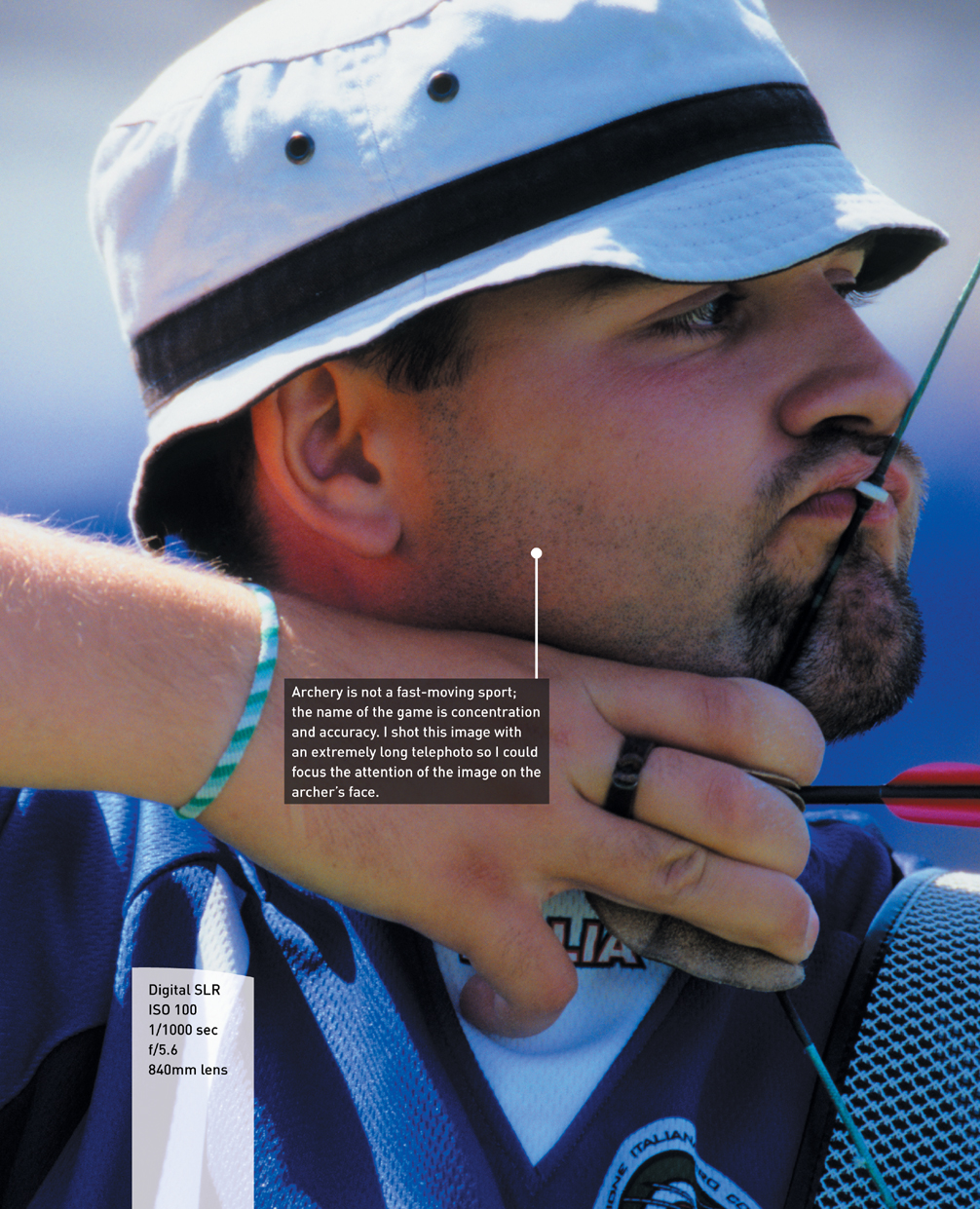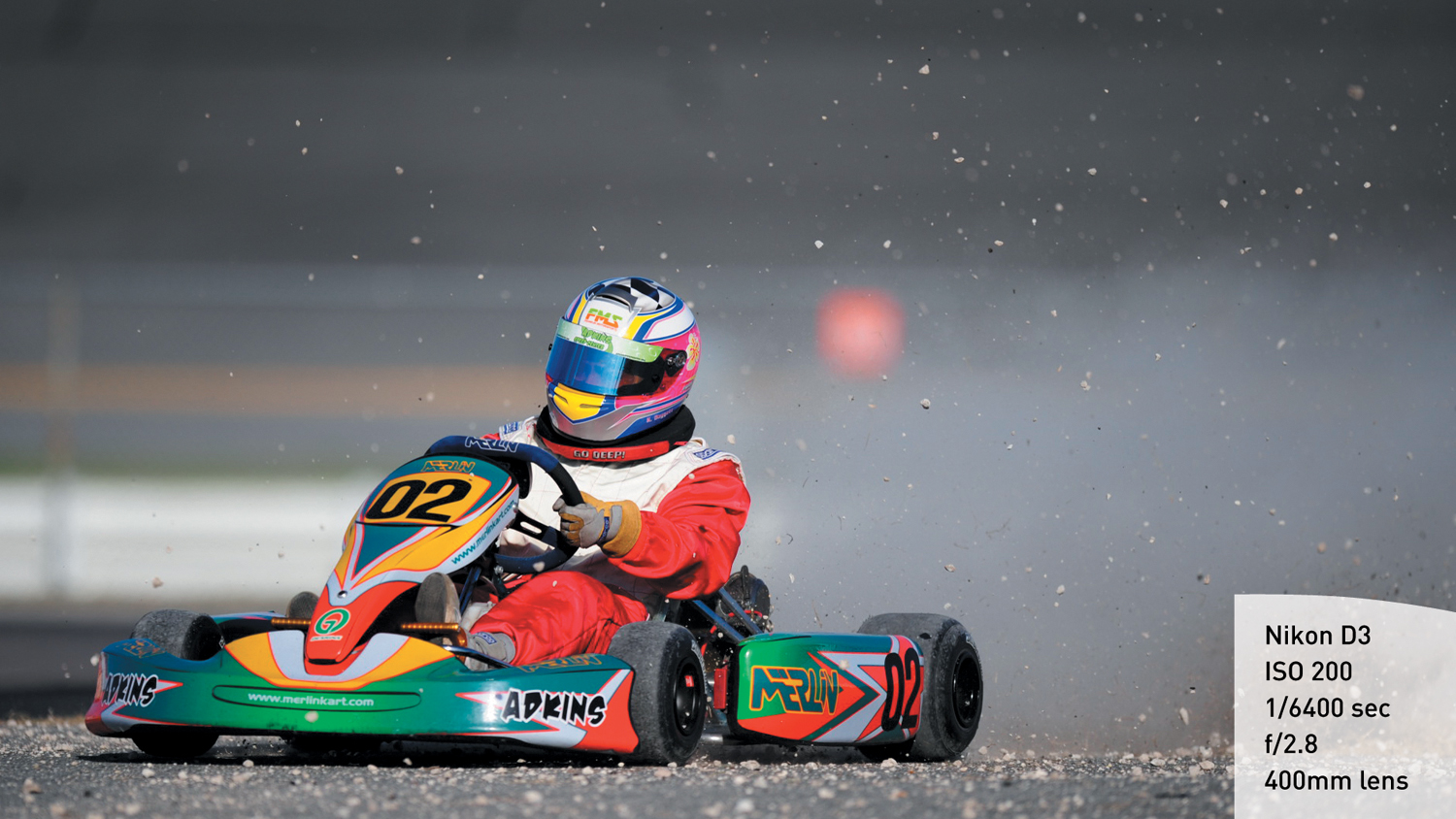12. Personal and Professional Growth
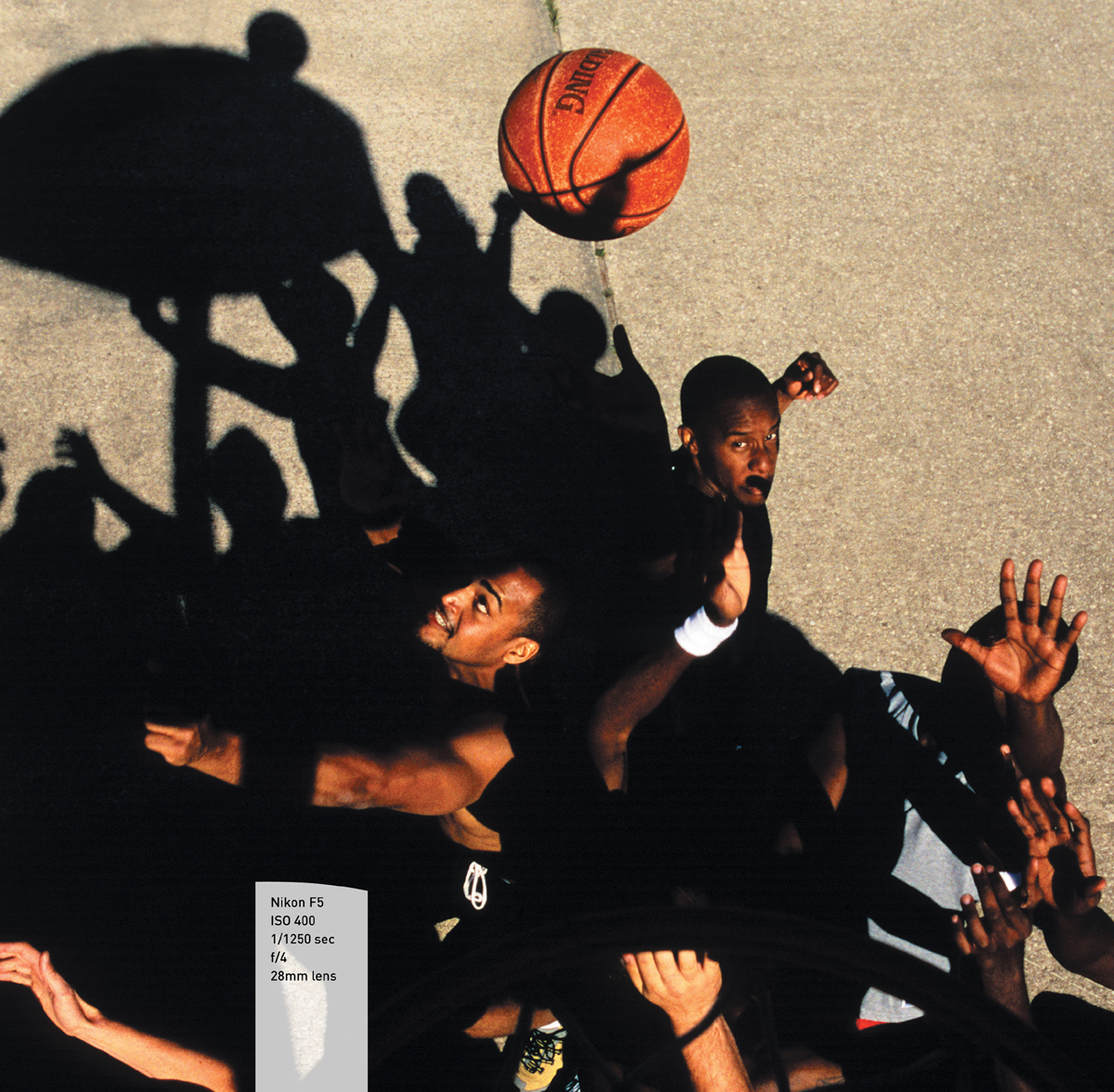
A group of men play a pick-up game of basketball in Gainesville, Florida. Usually, I’m shooting NCAA sports in Gainesville, because it is the home of the University of Florida. But after teaching a class one evening, I saw this game on a neighborhood court.
Beyond the Shoot
The most important thing you can do as a photographer is continue to grow. My desire to be better and learn more is what has gotten me this far in the industry. If I am not taking a picture, I am studying new ways to create images and solve technical problems. There is no off position on the visual switch. I am always working and always thinking.
This chapter provides you with some suggestions to help you grow photographically on a personal and professional level.
Poring Over the Picture

People frequently ask me if I have any “personal” projects. For me, everything I shoot is personal. I give every image my best effort and undivided attention. This photo was taken during the archery competition at the Olympic Games in Athens in 2004.
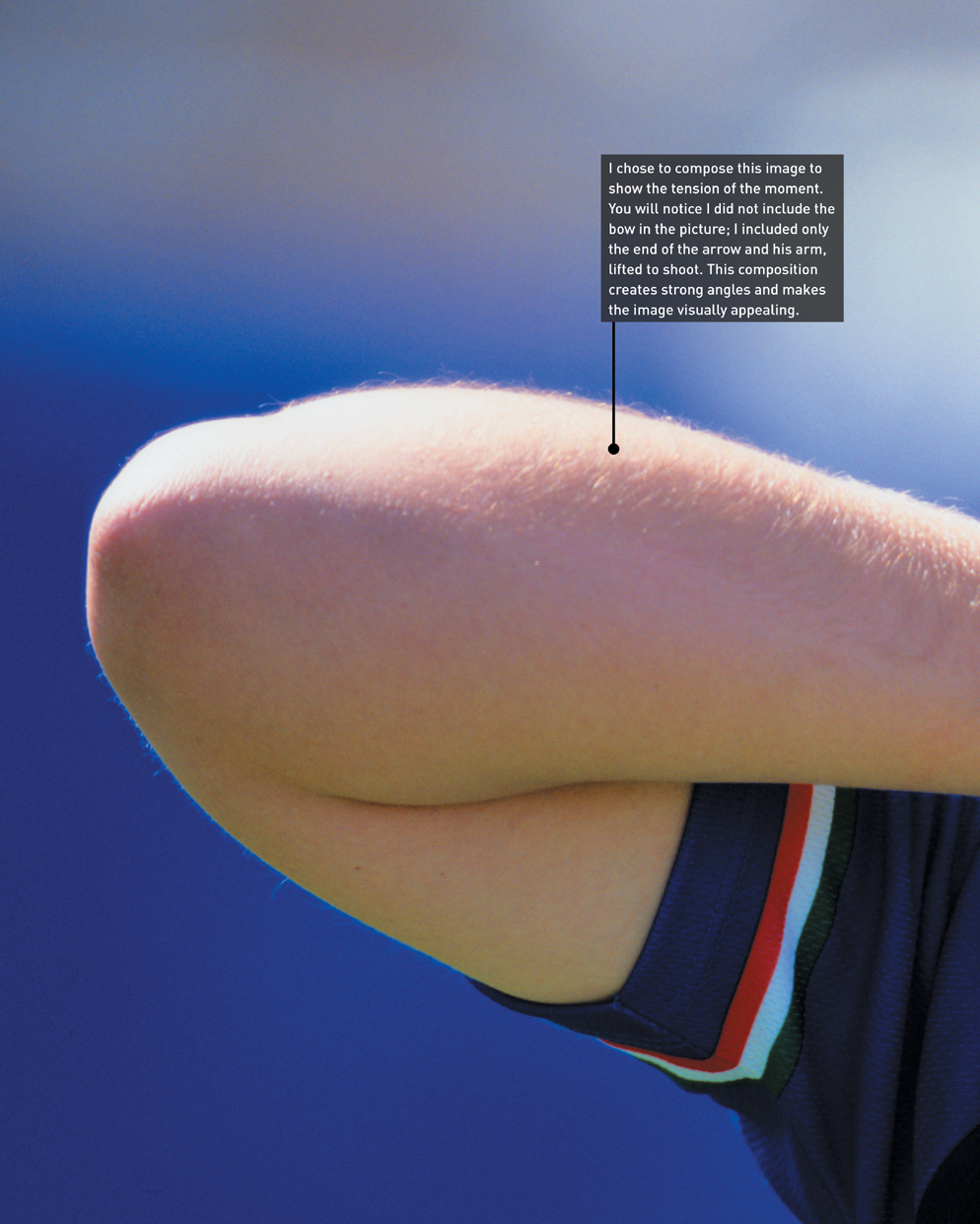
Expanding Your Business
People always ask me how I got to where I am. The answer is simple: I work harder and longer than anyone else. And I’m lucky that my vocation and avocation are the same. They say if you can do something you love, you never work a day in your life, and that has definitely been true for me.
With that said, I’ve worked arduously throughout the years to grow my business and my list of clients. Most important, I diversified the range of sports I covered. Not only do I photograph major professional sports, but I also spend a lot of time photographing kids in neighborhoods playing and competing in community events (Figure 12.1). As discussed throughout this book, sports photography isn’t all about big hits and big games. Instead, it is a cultural experience. Treat every event you attend with that in mind, and you’ll find a plethora of unique and compelling images.
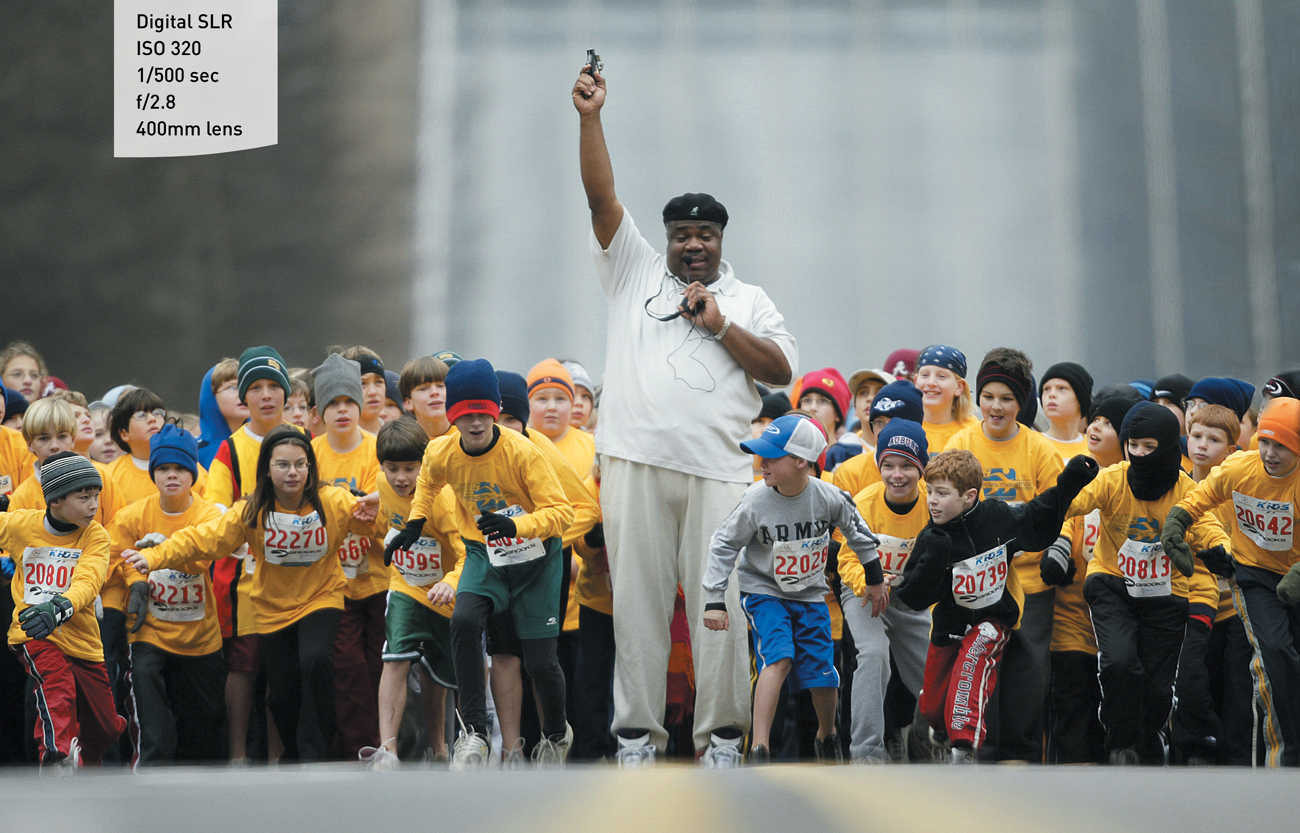
Figure 12.1 A group of kids line up for the start of the Kids 5k that ran before the Olympic Marathon Trials in 2004.
For example, I was supposed to shoot an ad in the Australian outback and, as happens frequently, the shoot I had traveled to the middle of the earth for fell through. The picture in Figure 12.2 happened because I didn’t panic. Fortunately, I recalled passing a motocross park on our drive out, so I turned the car around and drove back confident that I could salvage the assignment. I did.
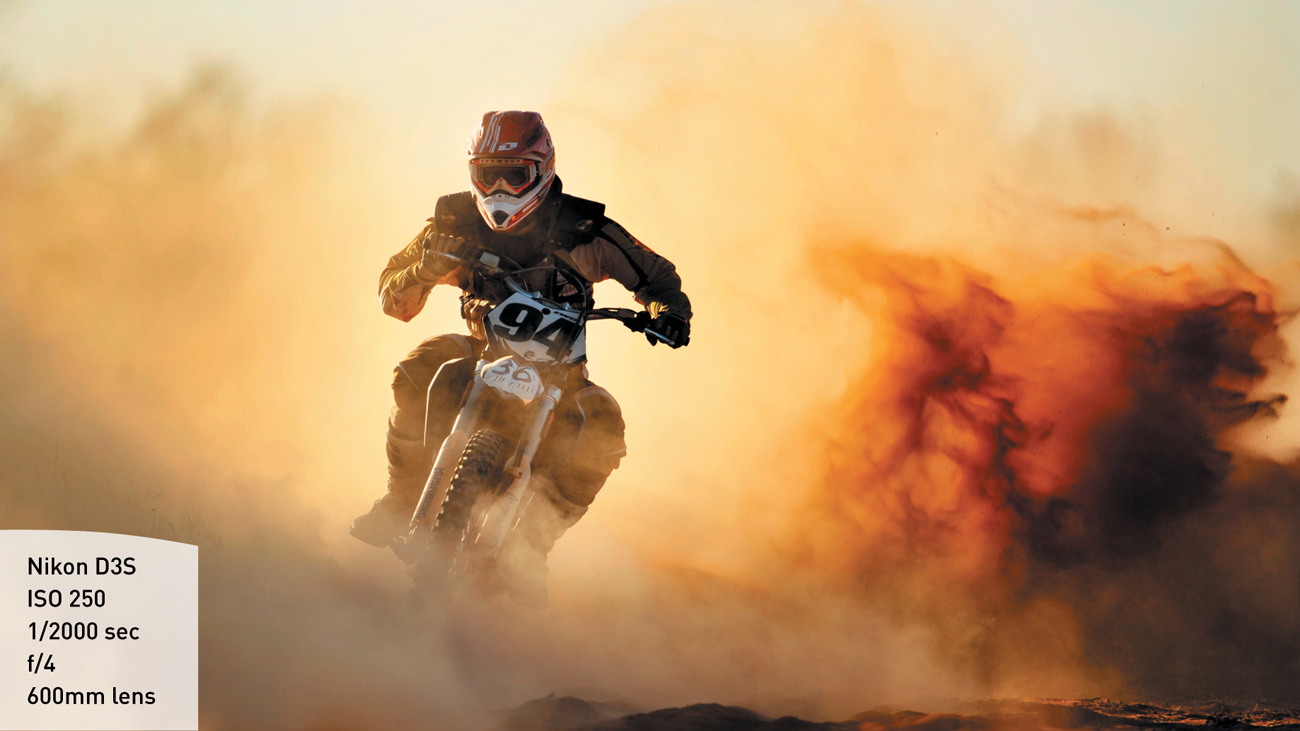
Figure 12.2 The dust and sunset light allowed me to create an image I had not previously considered.
Your Portfolio
You don’t need a large portfolio. That is a common misconception. Editors and art directors look for good images whether you have 5 or 50. My advice is to have a diverse set of images. Mix it up. Don’t include only one kind of image in your portfolio. You want to show that you can do anything. Therefore, include images of multiple sports, more than one focal length, and various angles.
Where to Invest
It is important to constantly invest in yourself with both time and money. Camera gear is expensive, which prevents many people from growing their business. The gear doesn’t take the picture, the photographer does, but having what you need for the job is still essential.
Technological advances influence sports photography more than any other photographic discipline. The camera manufacturers are constantly raising the bar in terms of what the cameras can do, but you have to be prepared to use them to their fullest potential. Better sensors in the new DSLR cameras allow you to use faster shutter speeds in lower light with amazing results. The new sensors also allow you to use ISOs that were previously unimaginable (Figure 12.3). Faster and more sensitive auto-focus allows you to track subjects better and more easily than before. Prior to auto-focus sports photography was extremely difficult. Manually focusing a 600mm lens required incredible concentration and a lot of hand-eye coordination (Figure 12.4). In addition, new sophisticated triggers allow you to fire cameras remotely from greater distances with better accuracy.
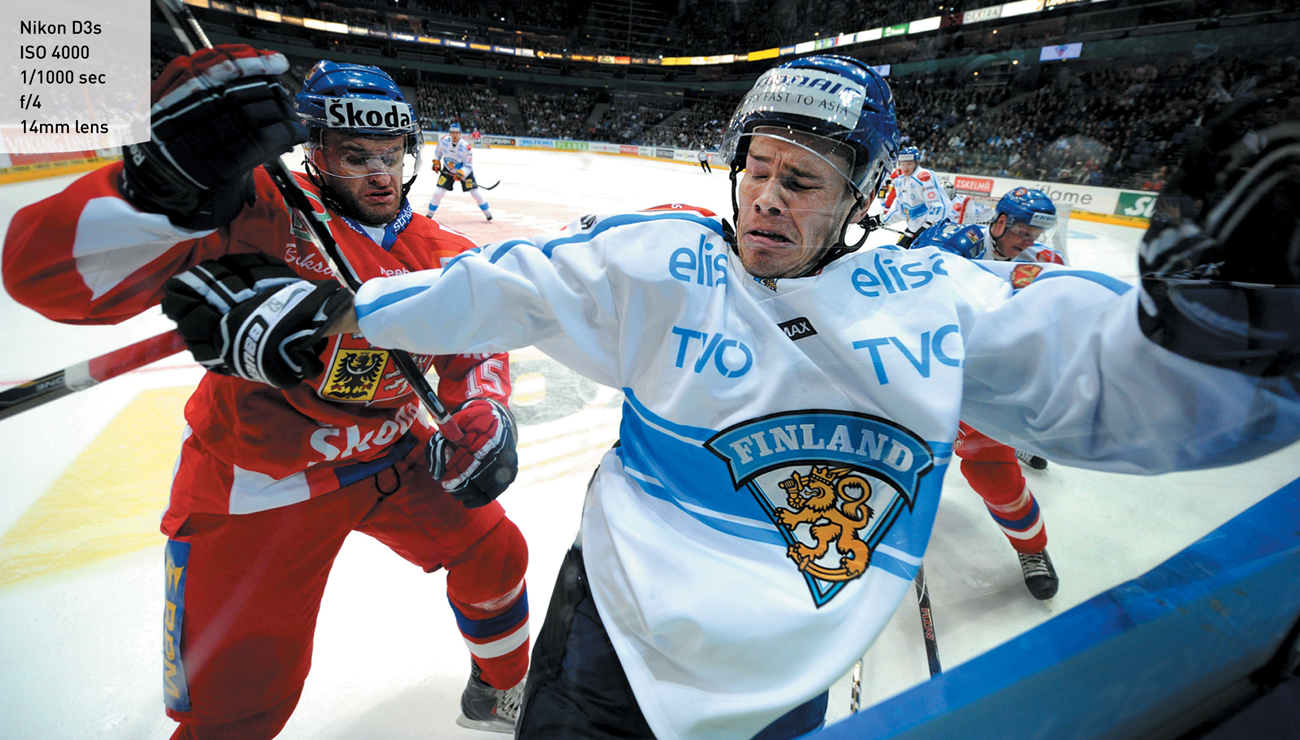
Figure 12.3 Before cameras like the Nikon D3s, I would have spent two days lighting this hockey arena with 4800w/s strobes to illuminate the players and freeze the action.
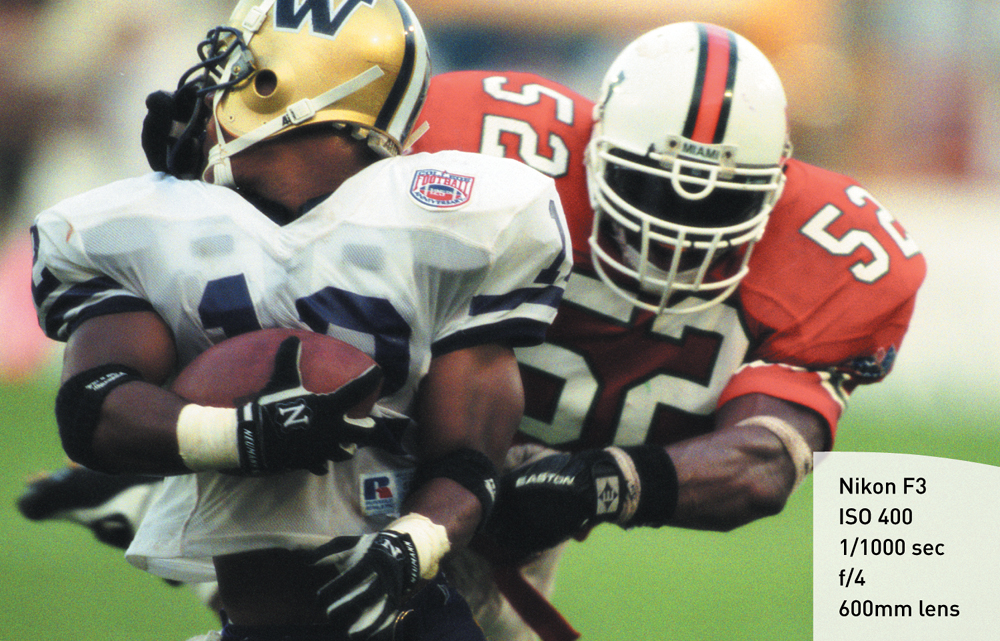
Figure 12.4 This picture of a University of Miami linebacker tackling a University of Washington running back was taken in the late 1980s when cameras were nothing more than the box that held film and lenses.
I’ve never bought a piece of equipment that hasn’t paid for itself. Be smart in your investments, but don’t be afraid to make them.
Sharpen Your Skills
The best way to improve your skills and increase your chances of making consistently good images is to work hard, practice constantly, and study. Practice makes perfect.
When I was a young newspaper photographer in Miami, I went to every assignment eager to make good images (Figure 12.5). There is no such thing as a bad assignment. You can make images of anything, anywhere. You never know when the muse will strike and the photographic stars will align.
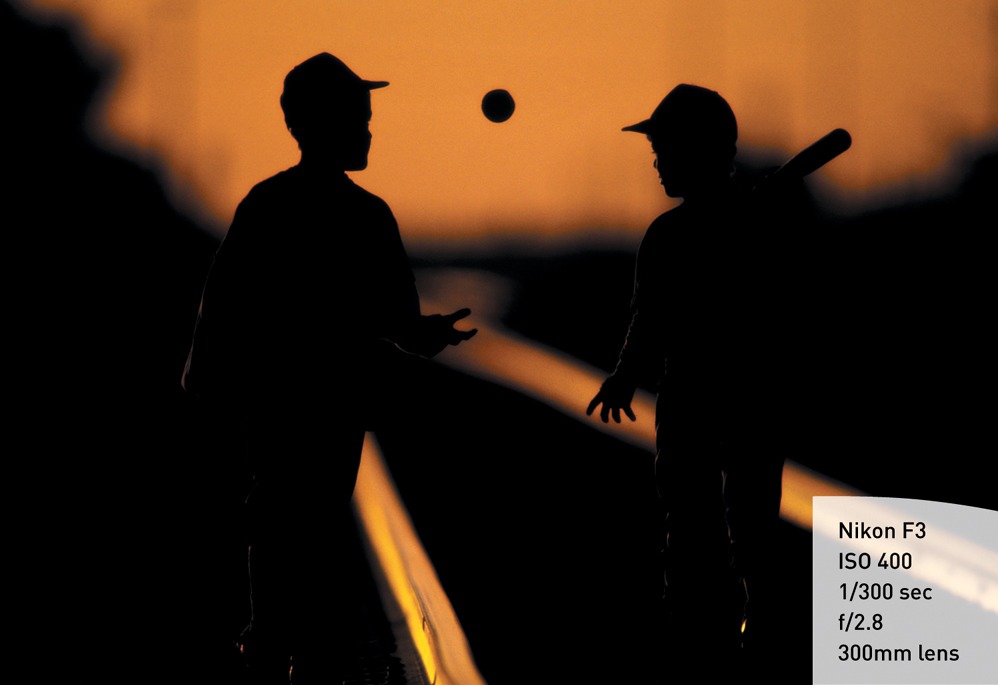
Figure 12.5 Kids toss a baseball back and forth as they walk home after a little league game in Scottsbluff, Nebraska.
Find subjects to shoot. In every community in the world something is going on every week. Whether it is a high school track meet or a little league baseball tournament, somewhere people are playing sports. In fact, Figure 12.6 is a perfect example. I was looking for something fun to shoot and did a quick search online to find kids’ go-kart racing at the Daytona International Speedway, which is only a short drive from my house.
Approach everything with a goal in mind, such as what kind of image you want to take away from the event (Figure 12.7).

Figure 12.7 A group plays stickball in the streets of Manhattan on the one year anniversary of the 9/11 attack on the World Trade Towers.
Know the sports you shoot. I spend a lot of time staying familiar with the athletes and the trends in the sports I cover. I do this by searching for information online, by reading magazines and newspapers, and by watching television news. The more you know going into an assignment or event, the better your chances to take full advantage of every opportunity.
One of the first stories I covered for Sports Illustrated was a piece on Archie Manning. I went to his home to photograph him with his family. Peyton was 14 and Eli was 9. I have since followed both of these future Hall of Fame quarterbacks through their entire careers (Figure 12.8).

Figure 12.8 I still enjoy photographing Peyton and Eli Manning when they play because I feel like I know them and how they play so well.
Challenge yourself. I spend a lot of time learning new things about the world of photography. Especially now, with the advent of digital cameras and editing software, everything changes quickly. Every day a new camera hits the market or a new technique is discovered, and it is important to stay abreast of the current technology.
Since 1983, I’ve been making images for Sports Illustrated and learning about my profession. The success I’ve known is not an accident; I work at it. I spend an hour a day studying because I’ve made it a point to build it into my schedule.
But perhaps the most important thing I’ve learned in my career is that you never know it all. There is always something new to learn and someone who knows how to do it. I have continually been amazed and humbled by the number of people who not only know more than me, but are willing to share their knowledge.
What’s Next?
The final question is what’s next? For me the answer is more of the same—photographing games big and little wherever they may happen.
Video is also a major part of my work now. It has become an important component of game coverage, not only for traditional broadcast outlets but also as part of the storytelling done by traditional still photographers. It’s simply too rich to ignore, and I suspect that my involvement with moving images will continue to grow.
The same rules apply to new and old media alike—good stories, nice moments, dedication to craft, and a desire to share.
Industry-wide I believe the same things that are in my future will be there for everyone else as well. Digital cameras have made it easier to make good quality images, and the Internet will continue to speed the distribution and increase the viewing possibilities.
Remember that at the end of the day, it’s the images that matter. The camera is simply a tool that allows you to take what you have in your heart, your mind, and your soul, and translate it into a viewing mechanism on a computer screen, a mobile device, a gallery wall, or in a printed publication so that you can share it with your viewers.
Chapter 12 Assignments
Spending time working on the following assignments will help you grow your business and become a better sports photographer.
Create a Portfolio: Putting Your Best Foot Forward
The most difficult thing to do is to edit your own work effectively. Start by choosing 20 images that you like and that you think represent what you do well. Show them to others and analyze their feedback. When you are ready, reach out to an editor and ask for a critique. This is a process you will need to do for the entire time you are shooting pictures if you want to continue to grow creatively.
Study Sports Photography on the Web: Keeping Up with the Joneses
Choose your five favorite sports photography websites. Visit them once a week. Look at what the photographers who are regularly published there are doing. Study not just the content, but also try to figure out how the pictures were taken. This will help you stay current and will give you needed information to get ahead.
Stay Abreast of New Cameras and Lenses: Technology Is Your Friend
More than any other genre of photography, sports photography is affected by advances in technology. Constantly paying attention to what the new gear can do will help you in the field by opening your eyes to new image-making opportunities.
Share your results with the book’s Flickr group!
Join the group here: flickr.com/groups/sportsphotographyfromsnapshotstogreatshots.

